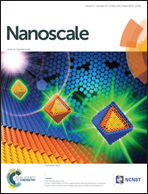How should the completeness and quality of curated nanomaterial data be evaluated?†
Abstract
Nanotechnology is of increasing significance. Curation of nanomaterial data into electronic databases offers opportunities to better understand and predict nanomaterials’ behaviour. This supports innovation in, and regulation of, nanotechnology. It is commonly understood that curated data need to be sufficiently complete and of sufficient quality to serve their intended purpose. However, assessing data completeness and quality is non-trivial in general and is arguably especially difficult in the nanoscience area, given its highly multidisciplinary nature. The current article, part of the Nanomaterial Data Curation Initiative series, addresses how to assess the completeness and quality of (curated) nanomaterial data. In order to address this key challenge, a variety of related issues are discussed: the meaning and importance of data completeness and quality, existing approaches to their assessment and the key challenges associated with evaluating the completeness and quality of curated nanomaterial data. Considerations which are specific to the nanoscience area and lessons which can be learned from other relevant scientific disciplines are considered. Hence, the scope of this discussion ranges from physicochemical characterisation requirements for nanomaterials and interference of nanomaterials with nanotoxicology assays to broader issues such as minimum information checklists, toxicology data quality schemes and computational approaches that facilitate evaluation of the completeness and quality of (curated) data. This discussion is informed by a literature review and a survey of key nanomaterial data curation stakeholders. Finally, drawing upon this discussion, recommendations are presented concerning the central question: how should the completeness and quality of curated nanomaterial data be evaluated?



 Please wait while we load your content...
Please wait while we load your content...